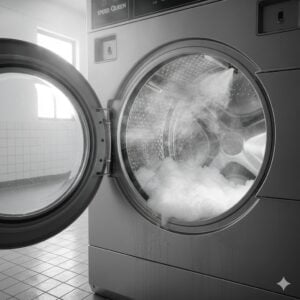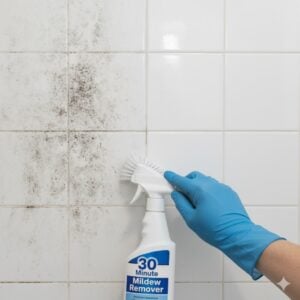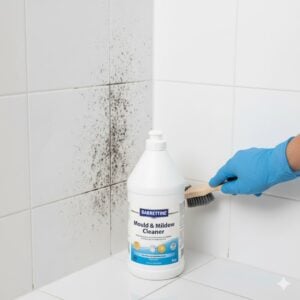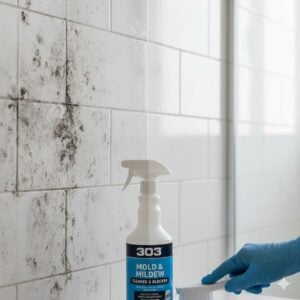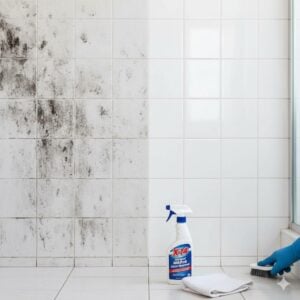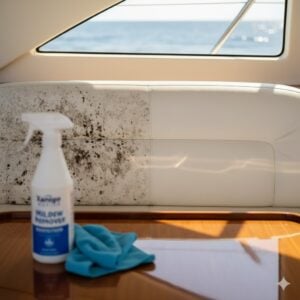Hello, dear readers! Today, we’re diving into the crucial topic of Mold Removal in Ajman, a challenge many homeowners and businesses face in our humid climate. Understanding how to effectively tackle mold is vital for maintaining a healthy, safe environment. It’s not just about aesthetics; it’s about your well-being. Let’s explore some expert tips and tricks that will guide you through the process, ensuring your space is mold-free and fresh.
Table of Contents
Toggle#1 Understanding Mold in Ajman
Mold Removal in Ajman is a critical concern due to the region’s unique climate conditions. Ajman, like much of the UAE, experiences high humidity levels for most of the year, creating an ideal environment for mold growth. This persistent issue affects homes, schools, offices, and industrial spaces, making it essential to understand mold’s impact and the best practices for its control and removal.
Mold thrives in moist, warm conditions, and its spores can spread quickly through the air. Once it takes hold, mold can be challenging to eradicate completely. Beyond the unsightly black or green patches it forms on walls, ceilings, or furniture, mold poses significant health risks. Prolonged exposure to mold can cause respiratory problems, allergies, and even more severe health issues, especially in children, the elderly, and those with compromised immune systems.
The impact of mold extends to property damage as well. It can weaken structural materials like wood and drywall, leading to costly repairs and devaluation of property. In Ajman, the combination of indoor and outdoor factors such as leaky pipes, poor ventilation, and the external humid air can contribute to the prevalence of mold issues. It’s not just about dealing with the visible signs of mold; understanding its root causes is crucial for effective removal and prevention.
To effectively manage mold, it’s vital to maintain low indoor humidity levels, below 60% if possible. This can be achieved through the use of dehumidifiers, regular air conditioning, and ensuring proper ventilation in kitchens, bathrooms, and laundry areas. Fixing leaks promptly and using mold-resistant materials during construction or renovation can also help prevent mold growth.
For areas already affected by mold, cleaning with solutions specifically designed to kill mold spores is necessary. However, it’s important to note that some mold infestations, especially those hidden within walls or air conditioning systems, may require professional remediation services to ensure complete removal.
#2 Early Signs of Mold – Catch Them If You Can!
Identifying the early signs of mold growth is essential in preventing its spread and mitigating its impacts on health and property. Early detection allows for quicker, more cost-effective remediation efforts, averting the extensive damage that advanced mold infestations can cause. There are several indicators that mold may be starting to grow in an environment, even if it’s not immediately visible.
Firstly, a musty, earthy odor is one of the most noticeable signs that mold may be present. This smell is particularly strong in areas with poor ventilation or in rooms that have experienced water damage. Secondly, visible signs of mold include small black or green spots that begin to spread across surfaces. These can appear on walls, ceilings, in corners, or around windows where moisture accumulates. Thirdly, excessive humidity in a room, leading to condensation on windows and damp surfaces, creates an ideal environment for mold spores to thrive.
Another early indicator of mold is the deterioration of indoor air quality, which may cause occupants to experience symptoms such as headaches, nasal congestion, throat irritation, coughing, or wheezing. Particularly sensitive individuals may notice these symptoms before any visible signs of mold appear. Additionally, water leaks, whether from pipes, roofs, or around windows, are often precursors to mold growth. Areas with past water damage should be closely monitored for any signs of mold.
Lastly, peeling, bubbling, or discoloration of paint and wallpaper can signal moisture issues within walls, potentially harboring hidden mold growth. Such conditions require immediate attention to prevent the spread of mold to other areas of the building.
Recognizing these early signs and taking prompt action can significantly reduce the need for extensive remediation later. Simple steps like improving ventilation, fixing leaks, and controlling humidity can be effective measures in preventing mold growth.
#3 DIY Mold Removal Tips
DIY mold removal tips are invaluable for tackling minor mold issues effectively, ensuring that your home remains a safe and healthy environment. Before embarking on DIY mold removal, it’s crucial to assess the extent of the mold growth. If the affected area is less than 10 square feet, it’s generally considered safe to handle it yourself. However, for larger infestations or if toxic black mold is suspected, seeking professional help is advised due to the potential health risks involved.
For small-scale mold removal, protective gear is a must; this includes wearing gloves, goggles, and a mask to prevent inhalation of spores. Ventilation is also key during the cleaning process to disperse any airborne spores. Begin by fixing any underlying moisture problems to ensure mold does not return after removal. This may involve repairing leaks, improving ventilation, or using a dehumidifier to reduce indoor humidity levels.
A simple yet effective solution for killing mold is a mixture of water and detergent. This solution can be applied to non-porous surfaces with a sponge or cloth to scrub away the mold. Do not use this solution on porous materials like drywall, as it can exacerbate the problem. For non-porous materials such as tiles and glass, a solution of bleach and water (no more than 1 cup of bleach in 1 gallon of water) can be used sparingly, though ventilation is crucial due to the fumes.
After cleaning, it’s important to dry the area thoroughly to prevent mold from returning. Affected porous materials, such as carpets or ceiling tiles, may need to be discarded if they cannot be fully cleaned. Always double-bag moldy materials before disposal to prevent the spread of spores.
Preventative measures should be taken to reduce the risk of future mold growth. This includes using mold-resistant paint, ensuring good air circulation, and regularly checking for leaks or condensation. Regularly cleaning and inspecting potential problem areas can also help catch mold before it becomes a significant issue.
#4 Professional Mold Remediation Services
Professional mold remediation services offer a comprehensive solution for tackling mold issues that go beyond the scope of DIY methods. These services are especially critical when dealing with large infestations, mold in HVAC systems, or types of mold that produce toxins, such as Stachybotrys chartarum, commonly known as black mold. The process professionals follow is methodical and thorough, ensuring not just the removal of visible mold but also addressing the root causes to prevent recurrence.
The first step in professional mold remediation involves a detailed inspection and mold testing. This step is crucial for identifying the mold type and the extent of the infestation. Professionals use a variety of tools, including moisture meters and infrared cameras, to detect mold in hidden areas, such as behind walls or under floors. Based on the assessment, they develop a remediation plan that outlines the steps required to safely remove the mold and restore air quality.
Containment is the next critical step, where the affected area is sealed off using plastic sheeting and tape to prevent the spread of mold spores during the cleanup process. Air filtration devices, such as HEPA air scrubbers, are employed to filter out mold spores from the air.
The mold removal process varies depending on the surfaces affected and the mold type. Non-porous materials can often be cleaned and sanitized, while porous materials contaminated with mold usually need to be removed and replaced. Advanced techniques, such as soda blasting, may be used for thorough cleaning of larger areas.
After removing the mold, professionals focus on drying out the area completely, using dehumidifiers and fans. This step is vital to prevent the mold from returning. The final phase involves repairing or replacing materials that were removed, such as drywall or insulation, and can include recommendations for preventing future mold growth, such as improving ventilation or moisture control.
Choosing a reputable mold remediation service is crucial. Look for companies with certifications from recognized industry organizations, such as the Institute of Inspection, Cleaning and Restoration Certification (IICRC), and ensure they follow guidelines set by the Environmental Protection Agency (EPA) or other relevant bodies.
#5 Preventive Measures to Keep Mold at Bay
Preventive measures to keep mold at bay are essential in maintaining a healthy, mold-free environment. Mold prevention is much more cost-effective and less labor-intensive than mold removal. Given the right conditions, mold can grow on almost any organic material, as long as moisture and oxygen are present. Therefore, controlling indoor moisture is the key to preventing mold growth.
Maintaining a dry environment can be achieved through various strategies. Firstly, identify and repair any water leaks promptly. Even a small leak can provide enough moisture for mold to thrive. Regularly inspecting plumbing, roofs, and windows can help catch leaks early. Secondly, ensure good ventilation in high-moisture areas such as kitchens, bathrooms, and laundry rooms. Use exhaust fans to vent moisture outside and not into attics or crawl spaces.
Using dehumidifiers and air conditioners can significantly reduce indoor humidity, particularly during the hot, humid months. Strive to keep indoor humidity levels below 60%, as recommended by the EPA. Monitoring humidity can be done with a simple hygrometer, available at most hardware stores.
Improving building and ventilation to control moisture involves actions like ensuring that the ground slopes away from the building foundation, so that water does not enter or collect around the foundation. Vent appliances that produce moisture, like clothes dryers and stoves, to the outside. Also, during construction or renovation, use materials that resist mold growth. For instance, opt for mold-resistant drywall or paints that contain mold inhibitors.
Regular cleaning and maintenance are also vital. Dust and dirt can supply food for mold, so regular cleaning helps keep mold at bay. In areas prone to moisture, such as bathrooms, it’s beneficial to clean more frequently and consider mold-resistant products like shower curtains or tiles.
Finally, in the event of flooding or significant water intrusion, act quickly to dry out the area. Remove or replace wet carpets and upholstery if they cannot be dried promptly. Fast action can prevent mold growth, which can start within 48 hours under the right conditions.
#6 Mold Removal Products – What Works?
Mold removal products play a pivotal role in the battle against mold growth, offering a variety of solutions tailored to different needs and situations. From natural solutions favored for their safety and environmental friendliness to powerful chemical agents capable of tackling more severe infestations, the choice of product depends on the severity of the mold problem, the types of surfaces affected, and personal preferences regarding chemical use.
For minor mold problems or for use on sensitive surfaces, natural products such as vinegar, baking soda, and hydrogen peroxide are preferred. Vinegar, an acidic solution, can kill most mold species on contact. It’s safe to use on most surfaces and doesn’t leave a toxic residue. A solution of equal parts water and vinegar sprayed onto the affected area, allowed to sit for an hour, and then wiped away can effectively manage minor mold issues. Baking soda, mixed with water to form a paste, can be used to scrub mold off hard surfaces, while hydrogen peroxide, applied directly to the moldy area, can kill mold through its oxidative effects.
For more stubborn mold or on non-porous surfaces, stronger chemical solutions may be required. Bleach is a common choice, known for its effectiveness at killing mold and whitening surfaces. However, it’s important to use bleach cautiously, as it can be harmful to skin, eyes, and lungs, and it’s ineffective against mold on porous surfaces. Commercial mold removers, available in most hardware stores, offer a potent solution often containing antimicrobial agents that can kill mold and prevent its return. These products usually require safety precautions, such as wearing gloves and ensuring adequate ventilation.
Regardless of the chosen product, proper application and safety measures are crucial. Always follow the manufacturer’s instructions and test the product on a small area first to ensure it does not damage the surface. After applying mold removal products, thorough drying is essential to prevent the mold from returning.
#7 The Role of Deep Cleaning in Mold Prevention
The role of deep cleaning in mold prevention cannot be overstated. While regular cleaning helps maintain a certain level of hygiene, deep cleaning goes several steps further, targeting hidden mold spores and removing the dirt and grime that can foster mold growth. Deep cleaning involves a thorough cleansing of all parts of the home, including those that are not part of the daily or weekly cleaning routines. This comprehensive approach is crucial in areas with high humidity and moisture levels, such as Ajman, where mold thrives.
Deep cleaning strategies include washing fabrics, such as curtains and upholstery, that can harbor mold spores. Carpets and rugs should be steam cleaned to kill mold spores that vacuuming alone may not remove. Hard surfaces in kitchens and bathrooms, prone to moisture, benefit from scrubbing with mold-killing solutions. Paying special attention to grout lines and caulking, where mold loves to hide, is also important. Air ducts and vents should not be overlooked, as they can circulate mold spores throughout the home. Having these professionally cleaned can improve indoor air quality significantly.
An often-overlooked aspect of deep cleaning is the decluttering process. Reducing clutter decreases the number of places where mold can grow unnoticed. It also improves airflow in the home, reducing moisture accumulation. Ensuring that storage areas, such as basements and attics, are well-ventilated and dry is part of this process. These areas should be checked regularly for signs of moisture or mold growth, especially after heavy rains or in seasons with high humidity.
For households in regions susceptible to mold growth, scheduling deep cleaning sessions bi-annually or quarterly can make a significant difference in maintaining a mold-free environment. This proactive approach not only helps in mold prevention but also contributes to the overall health and well-being of the household by reducing allergens and improving air quality.
Why Bio-On Is Your Go-To Solution for Mold Removal Ajman
Bio On stands as your premier solution for mold problems due to its comprehensive approach to mold remediation and deep cleaning services. With a team of certified professionals who leverage the latest in mold removal technology and techniques, Bio On ensures effective eradication of mold at its source. The company prioritizes not only the removal but also the prevention of future mold growth by addressing the underlying moisture issues and offering tailored advice for maintaining a mold-free environment. This commitment to excellence, combined with 24/7 availability for free consultations, makes Bio On a trusted partner in safeguarding your health and property against the threats posed by mold.
Conclusion
Addressing mold issues promptly and effectively is essential for maintaining a healthy living environment and protecting property value. Understanding the causes, identifying early signs, and employing both DIY and professional remediation strategies are key to controlling mold. Preventive measures and regular deep cleaning can significantly reduce the risk of mold growth. For situations that require expertise and specialized equipment, Bio On offers reliable, professional solutions tailored to individual needs. Don’t let mold compromise your health or property. Reach out to the Bio On team via the Whatsapp button for a free consultation and ensure your environment is safe, clean, and mold-free.







